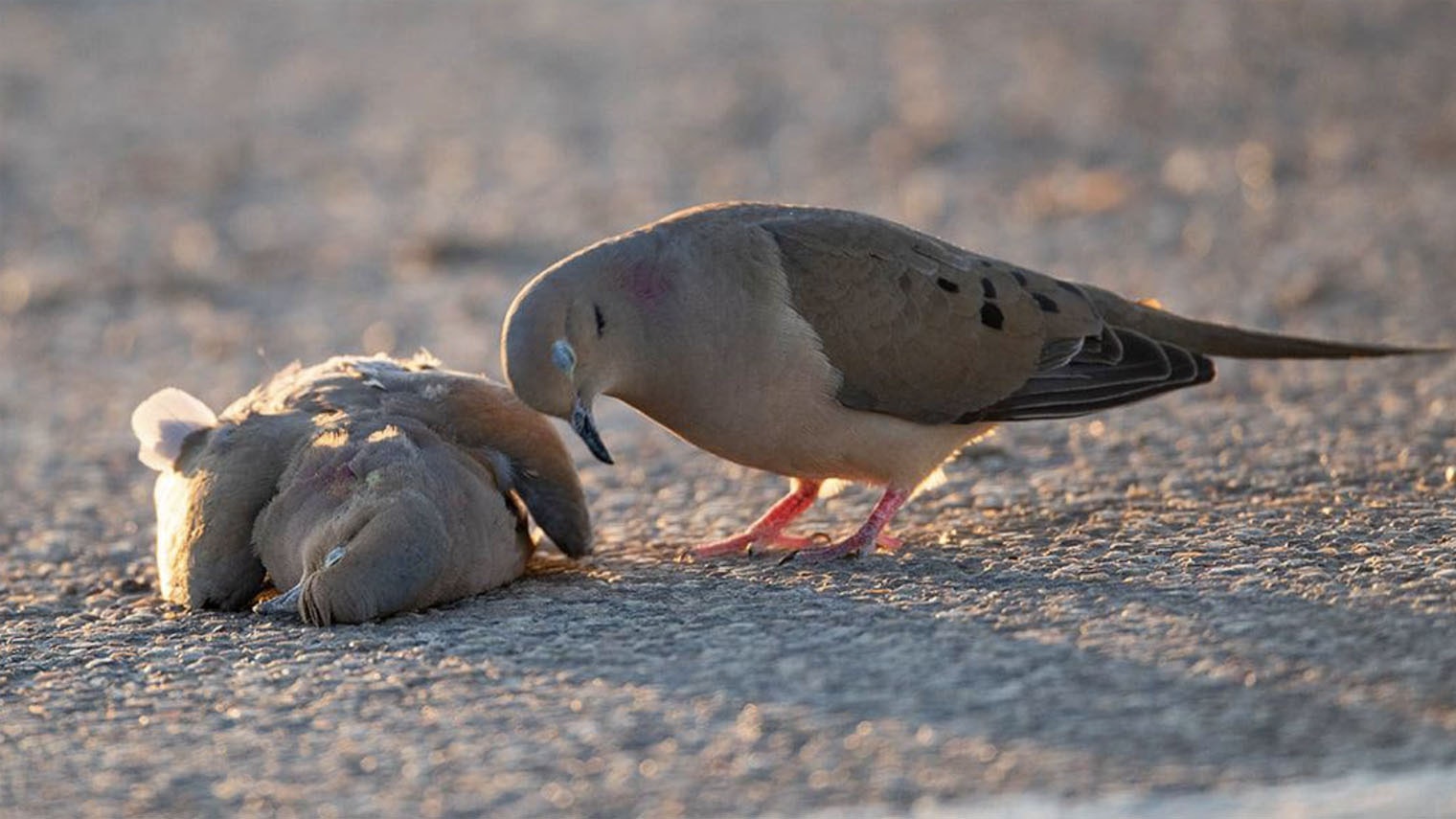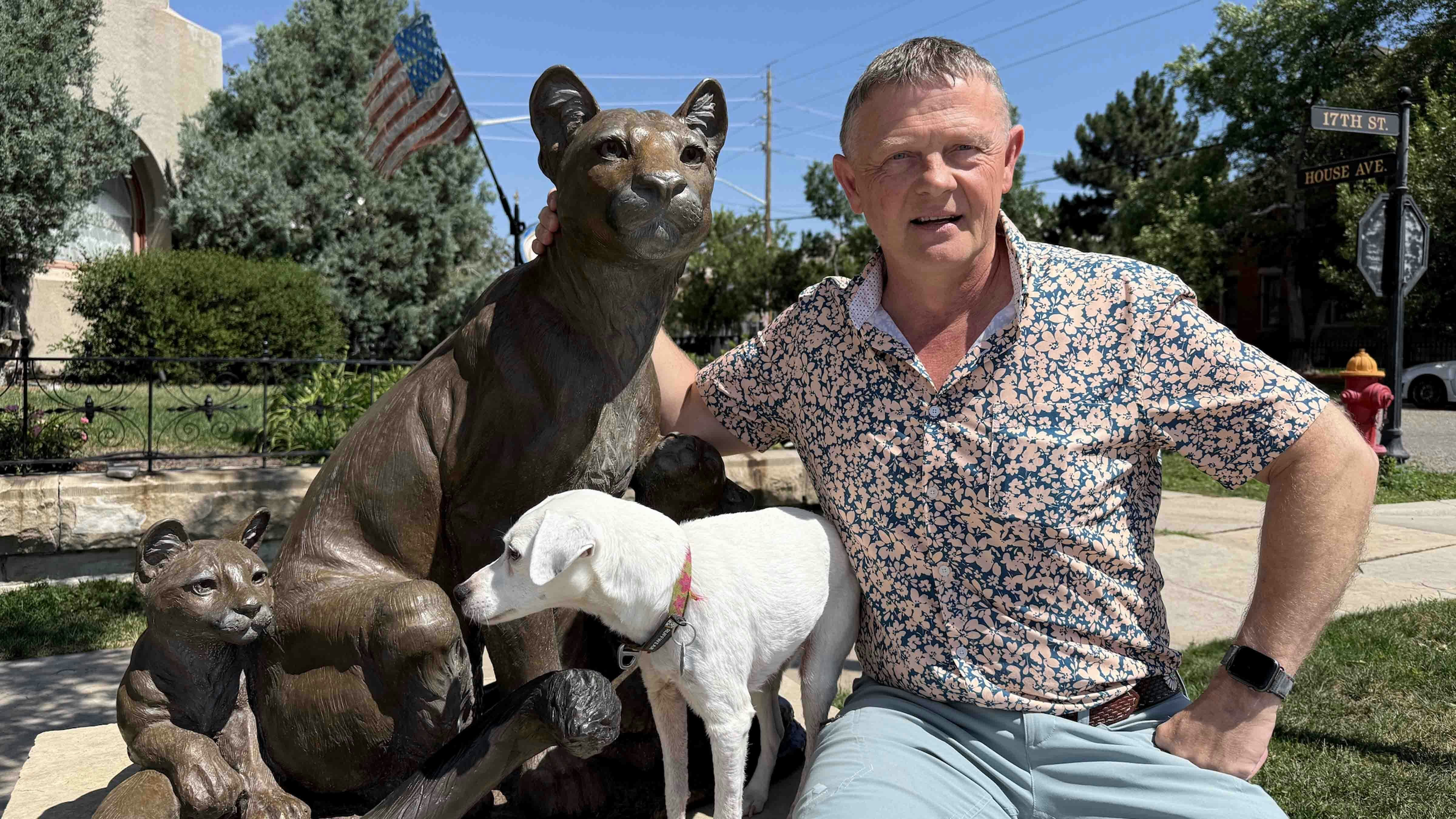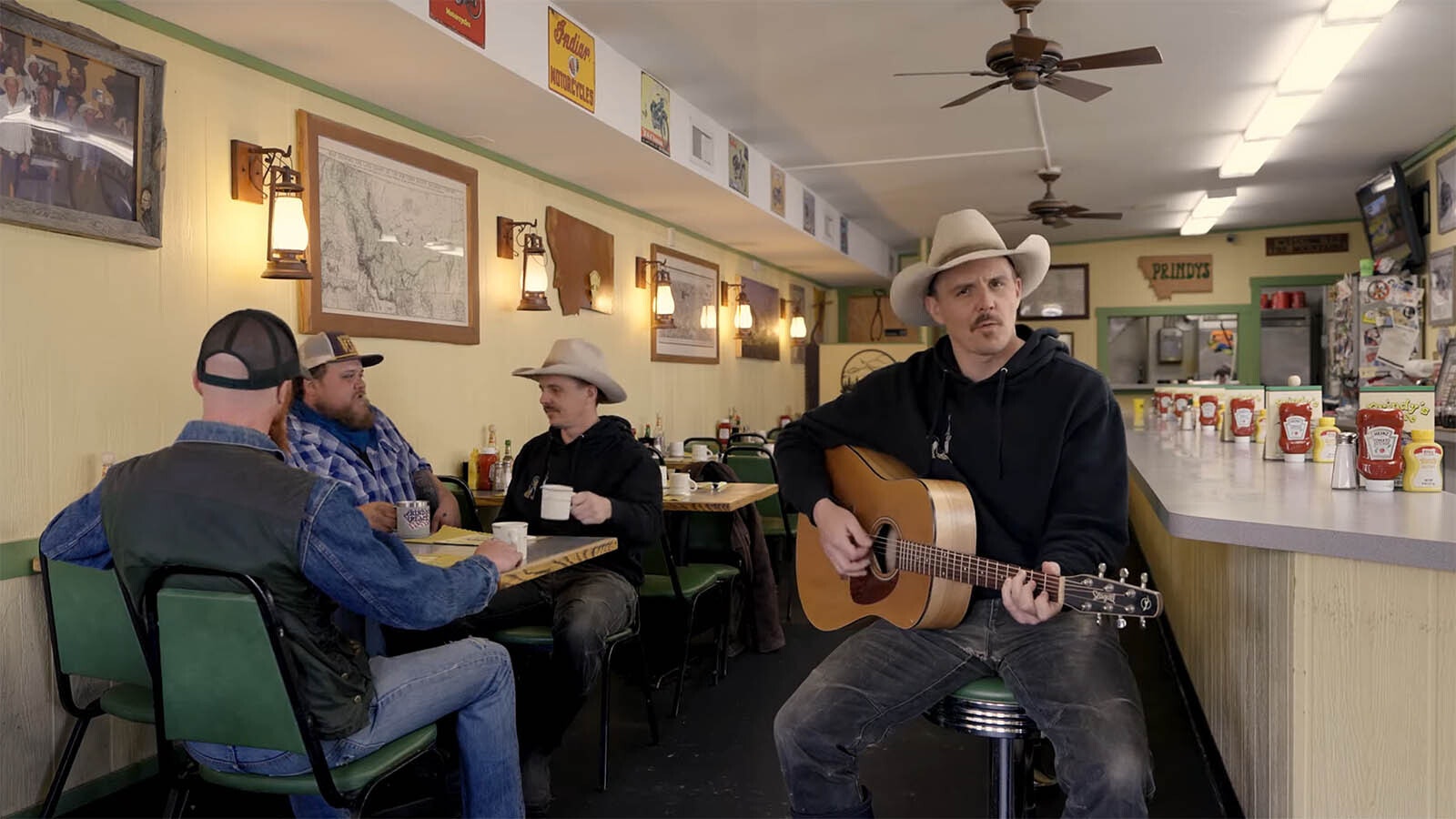The bird caught James Yule’s eye as he was driving past on Highway 20 in Wyoming on Sunday.
It was evening and the professional photographer was about two miles north of Worland when he saw what appeared to be a mourning dove sitting on top of another one on the left side of the highway, just over the white line in the road. It was unusual enough to make him slow his vehicle and ultimately, turn it around to take a closer look.
From across the road, Yule could see now that one of the birds was dead. Likely, struck by a car within the last 15 minutes. The live bird was nudging the dead one with its beak, as if trying to render it conscious or push its body over off the road.
Passing vehicles stirred the bird who skirted off to safety before promptly returning with its eyes fixed on its dead mate. Yule watched as it rustled its feathers and seemed to jump on the dead bird’s body before lowering its head to nudge it again.
“It was like he was trying to shake an unconscious person to wake them up,” Yule said. “It was as if he had no idea what was happening. No conception of death.”
Yule picked up his camera and started shooting. He didn’t know anything, really, about mourning doves other than, later when he went through his photos, from his vantage point, it just seemed like the bird couldn’t understand why his mate wasn’t getting up.
He doesn’t know much about mourning doves other than they are frequently found together in pairs at this time of year and he thought they mated for life.
The emotion of the moment got to him, he admitted. He stood there taking photos for another 30 minutes or so until it started to get dark, at which point he moved the dead bird off the road, so the other bird wouldn’t get hit, too. He found a shoe and marked the spot on the road, so he could come back the next day and check on it.
Later, when he got home and took a closer look at the images, the photos would tell the deeper story that his naked eye didn’t catch. They captured the raw intimacy of the moment. In some photos, the live bird seemed to be bowing its head in sorrow or prayer.
“Once I realized what was going on, I thought it was the saddest thing ever,” he said Monday told Cowboy State Daily by phone from his home in Worland. “It was sad, but human. There was definitely a sense of loss.”
He wanted to post what he saw publicly for others to see, so he put a series of images on a couple different social media sites.
By the next day, the posts had netted more than 6,000 views within a few hours, with many commenting on how sad it was while others remarked on the loveliness of the moment and the fact that birds seemed to have more love in their hearts than many humans.
Others debated whether or not the mourning dove had the capacity for feelings and whether they actually mate for life.
As it turns out, according to experts, doves do not take lifelong companions.
To the best of her knowledge, mourning doves do not stay together for life, according to Tina Toth, board member of the Bighorn Audubon Society and an active birder.
Citing several sources including the National Geographic Field Guide for Birds, Birds of Wyoming and the Audubon Society Master Guide to Birding, Toth said there is no evidence that the birds stay wholly committed for longer than a year’s mating season.
“Most (experts) discuss mating behavior in general and distribution but none claim the lifetime bond,” she said by email Tuesday, noting that the Audubon’s site does include a list of birds that mate for life, but mourning doves are not among them.
Robyn Bailey of the Cornell Lab of Ornithology in New York confirmed Toth’s theory that the birds are not monogamous.
“Mourning doves seek partners in the spring and can find a new partner each year, and this pair bond can occasionally last through winter,” Bailey said. “However, they also may change partners between each nesting cycle, so they definitely do not mate for life. They may have three to six nesting attempts each year, always laying two eggs, and both sexes will incubate eggs and feed young.”
As to the apparent sadness of the bird’s response to losing its mate, the reaction may be due to the realization that the surviving dove will bear the burden of child care on its own, Bailey added.
Mourning doves are one of five species of the columbidae found in Wyoming along with the rock pigeon, or classic pigeon, its wild cousin the band-tailed pigeon, the Eurasian collared-dove and white-winged dove. Perhaps most notably, mourning doves are known for their distinctive woeful two-syllable “coo” followed by two or three louder ones which they use to court their mate and to warn other birds of danger. There are no technical differences between pigeons and doves, according to Bailey, other than doves tend to be smaller.
“The males and females look alike, and so it’s not possible to tell in the photo which partner died, but it probably does represent a real biological loss to the surviving mate if she/he had a nest because they both do contribute to incubation and raising young,” Bailey said. “So that would be a detriment even if there was no emotion involved.”
Bailey said she is not an expert on animal intelligence or emotion, but given their bond as a pair in rearing their offspring, losing a mate would threaten the viability of their young.
Mourning doves also have nests that frequently fail and the species is known for trying and trying again, Bailey noted, which in a biological sense means that they’re not heavily “invested” in a particular nest’s offspring in contrast to other species that nest only once every few years and spend years raising young to independence.
“So as you can guess,” she said, “Our tools for understanding how they experience loss are probably inadequate.”
Regardless of science, the raw emotion of the bird in the photos was hard not to anthropomorphize.
Toth, like Yule, said she the image of the apparent grief of the dove over the loss of its mate hit her in the gut. She recounted a similar experience of watching a male mallard whose mate had been hit by traffic also refusing to leave the side of the road where its mate lay dead. It’s not an easy image to forget, she said.
“It was heart breaking,” she said. “I can still see it as if I were there many years later. Is it because the reproductive bond is so strong or because they care the way we think of love, we may never know.”
If it’s any consolation, mourning doves have a relatively short lifetime, according to National Geographic. Typically, they live for around a year but can reach up to five years.
Regardless of lifespan, both Toth and Yule agreed that the photos tell a story.
“Probably because humans want to believe in true love and happy endings,” Toth said.









